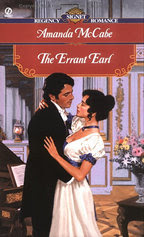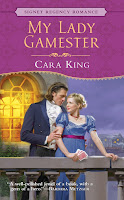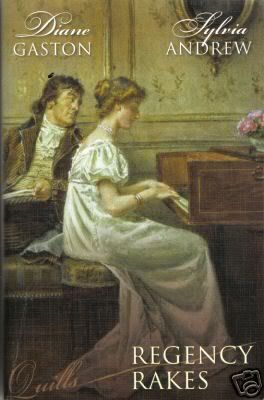
 Megan:
Megan: So, what made you think of this story?
Amanda: Well–Romeo and Juliet! Or the Zeffirelli movie version of it. Along with movies like A Dangeous Beauty and Casanova. I love the aesthetics of Renaissance Italy, the clothes, the villas, the whole juxtaposition of violence and feuds with the most amazing art and learning. And Venice is so romantic and mysterious! Julietta and Marc just seemed to belong there.
Megan: And what made you change your writing venue from Regency England to 16th century Venice?
Amanda: The Regency well had run dry! After the books and novellas at Signet, I had a very hard time getting excited about any Regency ideas. But I’ve always been interested in the Renaissance (being a complete history geek). The tremendous optimism of the time period, the advances in science and exploration, the rise of humanism and art–not just in terms of technique, but in what it meant to be an Artist. What it meant to really be human. Tremendously exciting. (Plus those great gowns!). And now even the Regency well is refilling with new ideas!
Megan: How did you do your research?
Amanda: I read a lot! (Plus forced myself to watch those movies over and over again. It was terrible, but anything for my craft…) I also found a great treasure at a book sale just as I was starting this story–a reproduction of a 16th century souvenir book full of colored sketches of Venice during Carnival. Masked revelers pelting each other with eggshells full of perfume, dance barges on the Grand Canal, sword duels, the Marriage of the Sea ceremony. It was a great inspiration, many of those scenes found their way into the A Notorious Woman! Masked balls at the Piazza San Marco, for instance. Some other great sources were Cohn’s Women in the Street: Essays on Sex and Power in Renaissance Italy; Ruggiero’s Binding Passions: Tales of Magic, Marriage, and Power at the End of the Renaissance; Wills’ Venice: Lion City; and Newton’s The Dress of the Venetians, 1495-1525. (These are just a few).
Megan: What’s with the codpieces? How did they work exactly?
Amanda: Heh heh, you said ‘codpieces’!! (Sorry, immature moment there. Ahem). In short (ha! short!), a codpiece is a flap or pouch attached to the front of trousers/hose, held closed by string ties or buttons. At first, anyway, this was a matter of modesty–hose were very snug, open at the crotch, with a man’s, er, equipment loose under the doublet. As doublets got shorter, this was just not going to work anymore, and the codpiece became a thing of vanity. They became padded to emphasize the genital area, weirdly shaped. To see some examples, you can go
here. (BTW, in Middle English, cod or codd means “bag”. Get it? Tee hee).
Megan: It seemed as if you might be thinking of continuing this with one of the other characters; do you have plans to go on with the series?
Amanda: When I first wrote this story, I didn’t mean to set up sequels! But, as characters sometimes do, Nicolai and then Balthazar caught my imagination. They needed their own stories! Their own heroines! I had also been thinking of another character for a while, a beautiful French assassin, et voila! She turned out to be a great match for Nicolai (even though she tried to kill him in the past. Oops). Balthazar was a bit tougher to matchmake for–he’s handsome but, well, complicated. He has to go to the Caribbean to find his love (and no, it’s not Elizabeth Swann!). I also may have to go there, and do in-depth research on beaches and pina coladas for this book…
Megan: Your heroine is a perfumier (is that the right word??). What’s your favorite scent?
Amanda: I love perfume, and read way too many perfume blogs! (Check out
this and
this). Unfortunately, I seem to have a weird body chemistry that makes scents I love in the bottle (like Chanel #5 and Joy) smell like motor oil when I put them on. But I have two stand-bys–Evelyn by Crabtree & Evelyn (a summery rose smell!) and Coco Mademoiselle for special occasions (why this works and #5 doesn’t, I dunno). It was so much fun to research Renaissance methods and styles of perfume bottles.
Megan: Are there real people who were the inspirations behind Julietta and Marc?
Amanda: I wish there was a Marc! As for Julietta–I guess she is a bit like me (sadly not the tall part). Most of my heroines are either something like me or something like how I wish I was. Or a mix. And heroes are guys I wish I could meet.
Megan: What are you working on now?
Amanda: I just started working on a Regency-set story (book #2 in the upcoming “Muses of Mayfair”–Clio’s story), which is set in Sicily. After that, on to Balthazar’s Caribbean story!
Megan: In your writing, do you feel you’re taking risks? How?
Amanda: I think trying an Italian Renaissance setting was a risk. And some editors felt the story was too “dark” (even though no one dies or gets tortured or anything!!). I was lucky Harlequin loved it, and saw the potential! Sometimes there are stories we just have to tell, and this was one for me. Also, I find myself drawn more to experienced, more complex heroines lately, women who are making their own way in a dangerous world. (Julietta owns a perfume shop, and dabbles in some alchemy on the side; Marguerite, Nicolai’s lady, is a spy/assassin; Balthazar’s heroine, Kate, runs a tavern in Santo Domingo). They’re more of a match for the heroes, LOL!
Megan: Is there anything you wanted to include in this book that you (or your CPs or editor) felt was too controversial and left out?
Amanda: Originally, there was more about Julietta’s alchemical experiments! But it was cut due to word count constraints. I do tend to ramble on when not given perimeters! They did let me keep the Greek fire, which I really enjoyed…
Be sure and comment for the chance to win a signed copy of A Notorious Woman, on shelves now! Winner will be announced Monday morning. And sign up for the Risky newsletter at riskies@yahoo.com, to get news of upcoming interviews and contests, and other fun stuff!
 See this book here? It’s part of the Idiot’s series, which I’m sure you’re all familiar with.
See this book here? It’s part of the Idiot’s series, which I’m sure you’re all familiar with. So I read along, nodding my head happily — Jo Beverley, Mary Balogh, good… Emma Jensen, Loretta Chase, Metzger, Kelly, Kerstan, Harbaugh, all good… Oh, look! Amanda’s on that list!!!!
So I read along, nodding my head happily — Jo Beverley, Mary Balogh, good… Emma Jensen, Loretta Chase, Metzger, Kelly, Kerstan, Harbaugh, all good… Oh, look! Amanda’s on that list!!!!
 And you know what else is great? Megan’s on the list too!!!!
And you know what else is great? Megan’s on the list too!!!! (And as a fan of the Ultimate Spider-Man, the Ultimate X-Men, and the Ultimate Fantastic Four, I think that’s darn cool.) 🙂












